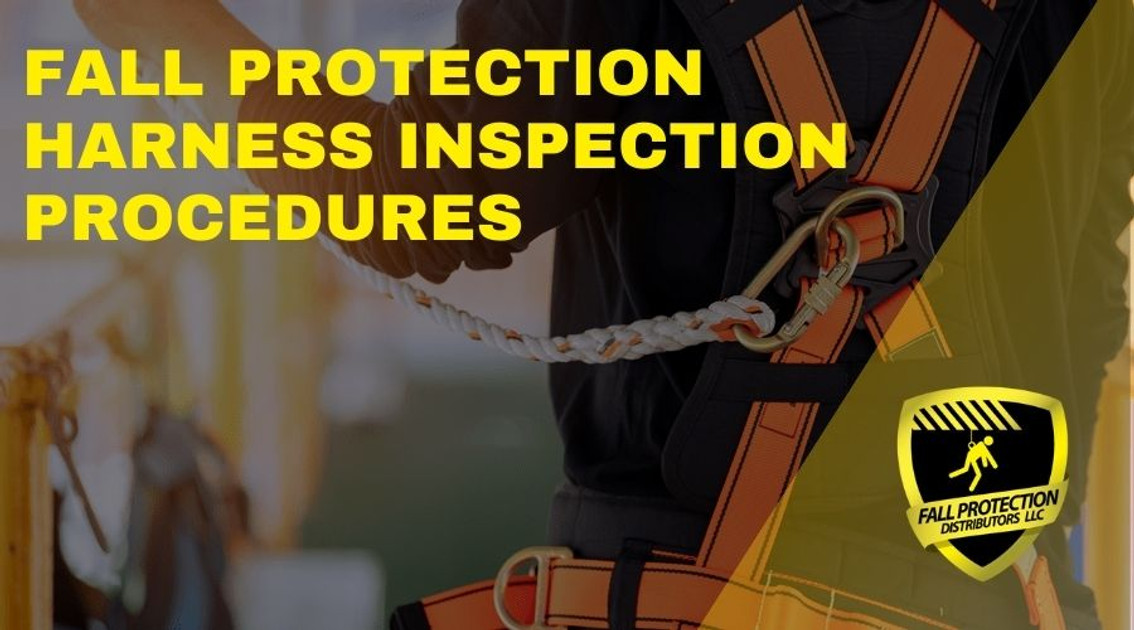Mastering Fall Protection Harness Inspections
Posted by Howie Scarboro - CEO Fall Protection Distributors, LLC on Feb 27th 2024
Are you ready to take your fall protection knowledge to new heights? Welcome to our comprehensive guide on fall protection harness inspections – your go-to resource for ensuring safety while soaring through your workday. Whether you're a seasoned professional or just dipping your toes into the world of harness inspections, this article is packed with valuable insights and practical tips to keep you secure and compliant. From unraveling stitches to suspiciously sticky labels, we'll walk you through the telltale signs of wear and tear that could spell trouble for your safety.
Ever wondered how often you should be inspecting your harness? Or what to do if it fails inspection? We'll tackle these burning questions and more. Let's face it, fall protection is serious business so let’s dive in! Here are the 5 most common questions asked when searching for fall protection harness inspections.
1. What is a fall protection harness inspection, and why is it important?
A fall protection harness inspection is a procedure that involves checking a fall protection harness to ensure it's safe and working correctly. This examination is essential to spot any signs of damage wear or weakening that could affect how well the harness safeguards workers, from falling dangers.
According to OSHA guidelines 29 CFR 1926.502(d)(1) employers must supply fall protection systems, including harnesses that meet the standards. These rules also dictate that fall protection gear like harnesses should be inspected before every use and annually by an experienced individual.
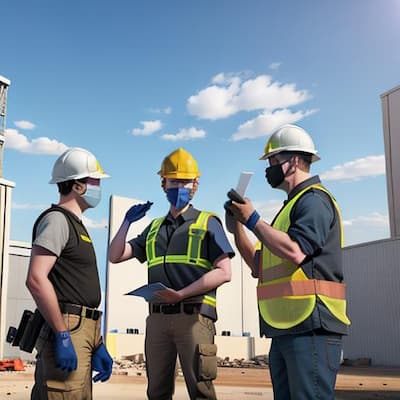
To carry out a thorough fall protection harness inspection, it's crucial to follow a procedure;
Visual Inspection;
Begin by checking the whole harness while scrutinizing each part carefully. Look out for any signs of wear and tear fraying or discoloration on the webbing. Inspect buckles, D-rings, and various other hardware for any deformities, corrosion issues or breakages.
Webbing Examination;
Pay attention to the webbing of the harness. Examine for cuts, abrasions or burns that could weaken its strength. Verify that the webbing isn't excessively stretched or worn out.
Assessment of Stitching;
Take a look at the stitching on the harness. Check for any damaged threads, worn edges or signs of coming apart. Make sure that the stitching is strong and securely and is holding all parts of the harness together.
Evaluation of Hardware;
Carefully inspect all hardware components, such as connectors and adjusters. Watch out for any damage like cracks, deformities or rust. Confirm that the hardware is working properly and firmly attached to the harness.
Verification of Labels;
Verify that all necessary labels and markings like manufacturer details, manufacturing date and relevant standards information are clearly visible on the harness. These labels provide details about the harness's specifications and compliance with regulations.
Documentation;
Record your observations from the inspection process, noting any issues identified and actions taken to resolve them. This documentation helps keep track of inspection records and aids in follow up tasks such as repairs or replacements.
If any defects or concerns are detected during inspection it is vital to take the harness out of service and have it fixed by a trained specialist or replaced. Regular OSHA-compliant inspections of fall protection harnesses demonstrate a dedication to worker safety and helps to reduce the the risk of accidents.
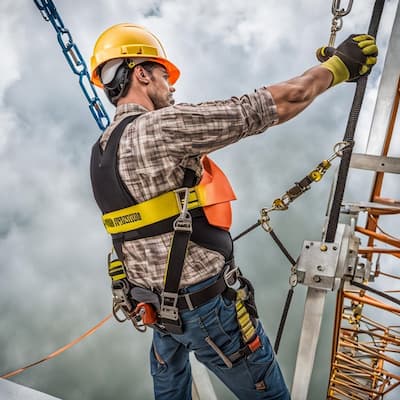
To sum it up, checking a fall protection harness involves a step-by-step process that includes looking at it checking the webbing and stitching, evaluating the hardware, verifying the labels, and keeping records. By following these steps, we make sure that fall protection harnesses are safe and reliable and will continue keeping workers safe from falls.
2. What are the key components of a fall protection harness that should be inspected?
What are the important parts of a fall protection harness that need to be checked during an inspection?
To properly inspect a fall protection harness it is crucial to check the following components;
1. Webbing;
Inspect the webbing of the harness, for any signs of fraying, cuts or abrasions. Also look out for discoloration, as it could indicate damage. Make sure the webbing is not overly stretched or worn.
2. Buckles and D rings;
Examine the buckles and D-rings for any deformities, corrosion or breakage. Ensure they are functioning correctly and can securely fasten the harness.
3. Stitching;
Check the stitching on the harness for damaged threads, frayed edges, or unraveling. Ensure that all stitching is secure and intact.
4. Hardware;
Inspect all hardware components like connectors and adjusters for any damage such as cracks or distortion. Confirm that they are in working order and firmly attached to the harness.
5. Labels and markings;
Ensure all labels and markings including manufacturer details, manufacturing date, and relevant standards information are present and legible.
During the inspection process, it's important to document your findings including any problems identified and actions taken to resolve them effectively. If any issues or problems are found during the inspection, it's important to take the harness out of service and have it fixed or replaced by a qualified professional. By inspecting fall protection harnesses as required by OSHA rules, employers can make sure their workers are safe when working at heights. Including these inspections, as part of a fall protection program helps reduce the risk of falls and shows a commitment to keeping the workplace safe.
In summary, checking fall protection harnesses is a safety step that involves an examination of all it's parts to ensure it works properly. Following OSHA guidelines and carrying out inspections systematically helps detect and fix any problems promptly thus ensuring the safety of workers at height.
Use our free harness inspection form to properly document your equipment inspections.
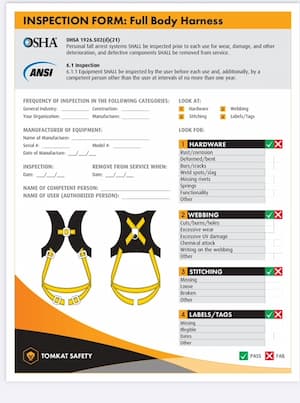
3. How often should fall protection harnesses be inspected?
Fall protection harnesses are crucial, for keeping workers safe from falls. It's important to inspect them. According to OSHA rules (29 CFR 1926.502(d)(1)) harnesses should be checked before each use and at least once a year by someone qualified.
However, it's not enough to stick to these checks. Factors like how often the harness is used, the environment it's used in, and the type of work being done can affect how often it needs to be inspected. Employers should set up checks to make sure the harnesses stay safe and reliable.
Regular checks help spot any signs of wear, damage, or faults that could make the harness less effective. By checking these items, employers show they take safety seriously and reduce the chances of accidents caused by faulty equipment.
In short, although OSHA says we need to check before each use
and yearly, it's better to do checks for safety and not just for compliance. Employers should adjust how
often they check based on their conditions in order to maintain high safety standards
and follow regulations closely.
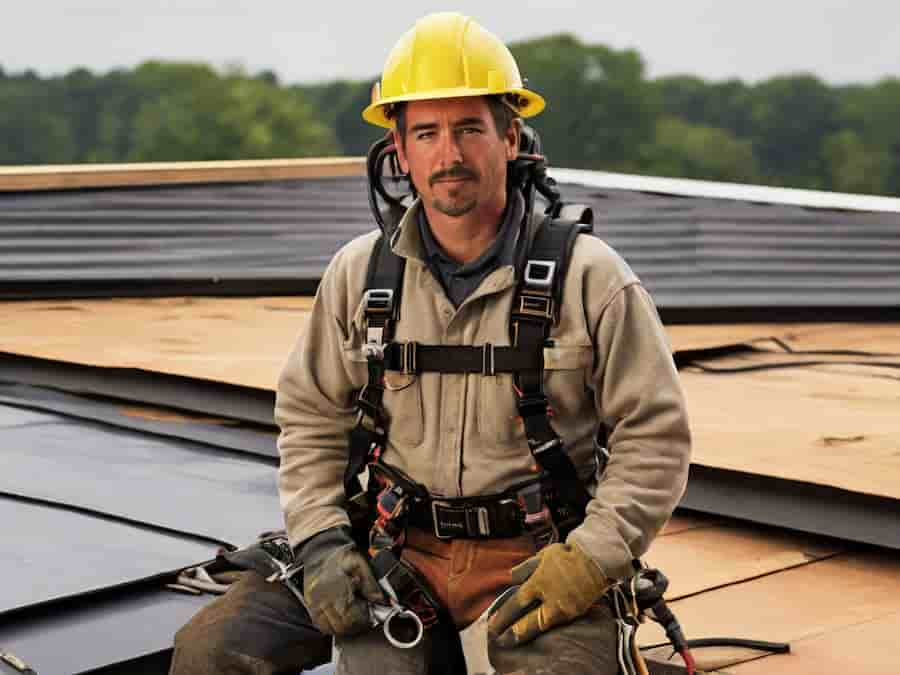
4. What are some common signs of wear or damage that should be checked during a fall protection harness inspection?
When conducting a fall protection harness inspection it's important to check the gear for any signs of wear or damage that could compromise it's safety and reliability. Here are some common indicators to look out for;
Webbing Wear;
Inspect the webbing of the harness for indications of fraying, cuts, abrasions or excessive wear. Damaged webbing can weaken the harness and diminish it's ability to withstand falls.
Hardware Damage;
Examine all hardware elements, such as buckles, D rings, connectors and adjusters for signs of damage like cracks, corrosion or deformation. Faulty hardware could fail during use, thereby putting the user at risk.
Stitching Integrity;
Check the stitching on the harness for frayed/damaged threads, frayed edges, or signs of coming apart. Strong and secure stitching is crucial for maintaining the integrity of the harness.
Label Condition;
Make sure that all necessary labels and markings, including manufacturer details, manufacturing date, and relevant standards are visible and readable on the harness. Faded or damaged labels may suggest excessive exposure to damaging factors over time or improper handling.
Discoloration;
Check for any discoloration on the harness, which could indicate contact with chemicals or UV rays, potentially weakening the material's strength and durability.
Loss of Stretchiness;
Test the stretchiness of parts like straps or leg bands to make sure they still offer tension and support. Over time, elastic materials can lose their stretchiness affecting how well the harness fits and works.
Overall Condition;
Evaluate the state of the harness, considering it's cleanliness and smell. Unusual smells or signs of contamination could signal excessive exposure to substances that might break down the material over time.
By inspecting these indicators of wear or damage during a fall protection harness check, employers can catch potential problems early and address them to maintain worker safety at heights.
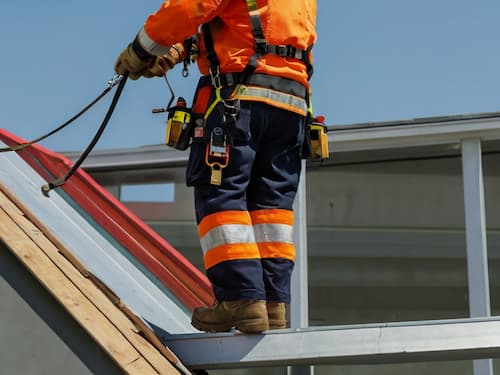
5. What should be done if a fall protection harness fails inspection?
If a fall protection harness fails inspection, it's crucial to act to uphold workplace safety and comply with regulations. Here's what you should do;
1. Remove from Service;
Take the failed harness out of service immediately to prevent any use until the issues are fixed. Clearly label it as "Do Not Use" to avoid deployment.
2. Repair or Replace;
Assess if the problems can be fixed, or if a replacement is necessary. Depending on the seriousness of the defects, arrange for repairs by a professional. Get a new harness that meets all safety standards.
3.. Report;
Record the inspection results, detailing the identified issues and steps taken to resolve them. Inform personnel like supervisors or safety officers about any problems detected. Keeping documentation is essential for tracking maintenance history and ensuring responsibility.
4. Retest and Reinspect;
After repairs or replacements are done, conduct another test or follow-up inspection to confirm that everything is in order and that the harness complies with safety regulations. Regularly check the harness condition to maintain compliance and protect workers safety.
Employee Training;
Train your staff on how to inspect harnesses and stress the importance of reporting any problems. Teach them about the significance of using equipment that has been inspected and approved to reduce the chances of accidents or injuries.
Reviewing Inspection Procedures;
Take a look at the inspection procedures and rules to find areas that could be improved. Think about increasing the frequency of inspections or providing training for inspectors to make sure inspections are more effective.
Conclusion
By following these steps employers can make sure that any faulty fall protection harnesses are dealt with quickly, reducing the risk of accidents and injuries at work. Making safety a priority and following regulations is crucial for creating a working environment for everyone.
Becoming skilled at inspecting fall protection harnesses isn't about ticking off boxes; it's about putting safety and giving peace of mind to every worker on site. By realizing the importance of inspections and staying alert for signs of wear and tear, you can lower the risk of unnecessary accidents and create a safe workplace environment.
Remember, safety is a journey, not a destination. Keep up with regular inspections, stay informed about regulations, and invest in proper training for yourself and your team. Together, we can create a culture of safety where every worker feels empowered and protected. So, whether you're inspecting harnesses before a daring ascent or conducting routine checks as part of your job, know that your efforts make a difference. With each inspection, you're not just ensuring compliance; you're safeguarding lives.
We hope this guide has equipped you with the knowledge and confidence to tackle fall protection harness inspections like a pro. Stay safe, stay informed, and never underestimate the value of a well-inspected harness. Here's to a future where every worker returns home safely at the end of the day. Reach out if you have any questions regarding anything fall protection related. 863-703-4522 or www.FallPD.com. Check out OSHA's free 48 page fall protection training manual for more training tips.

